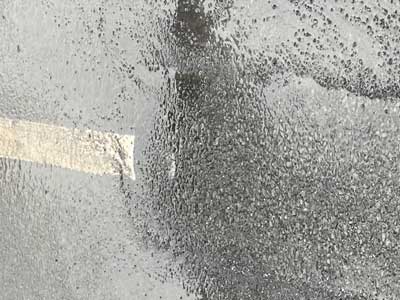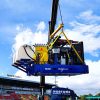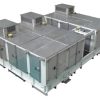Introduction
Removing paint and coatings from industrial surfaces is a common requirement across many sectors, including manufacturing, marine, energy, and construction. Whether you are preparing a surface for recoating, restoring original material, or complying with environmental standards, choosing the right removal method is essential for safety, efficiency, and long-term performance.
This guide explores the most effective techniques for industrial paint and coating removal, including high-pressure water jetting, mechanical methods, and environmentally responsible practices. We also highlight how modern technologies – such as rotary nozzles and water recycling systems – can improve results and reduce operational impact.
Why Remove Paint and Coatings?
- Preparing surfaces for new coatings
- Eliminating corrosion beneath coatings
- Restoring original surface profiles
- Meeting health, safety, or environmental regulations
Choosing the right removal method depends on the type of coating, the substrate material, and the working environment.


Common Methods of Paint and Coating Removal
1. High-Pressure Water Jetting
Water jetting uses ultra-high-pressure water (up to 2,800 bar) to strip coatings without damaging the underlying surface. It is effective for removing:
- Epoxies
- Polyurethanes
- Marine coatings
- Road markings
- Thermoplastic Coatings
Advantages:
- No abrasive media required
- Minimal dust and airborne contaminants
- Environmentally friendly
- Suitable for confined spaces
- Waste collection and water recycling options
Water jetting can achieve WJ-1 “white metal” cleanliness standards, making it ideal for critical recoating applications. UHP waterjetted surfaces are dry to the touch after coating removal using vacuum solutions. All waste water, paint and coatings can be collected easily for disposal or recycling.
2. Abrasive Blasting
Traditional abrasive blasting uses grit or sand to mechanically remove coatings. While effective, it generates dust and requires containment and cleanup. It may also damage delicate substrates.
3. Chemical Stripping
Chemical removers dissolve coatings but often involve hazardous substances and require careful handling and disposal. This method is less common in industrial settings due to environmental concerns. Additionally, it is impractical for large industrial projects such as tanks and pipelines.
Enhancing Water Jetting with Rotary Nozzles and Vacuum Recovery
Rotary surface prep nozzles improve the efficiency of water jetting by spinning the jet in a controlled pattern. This increases impact force and coverage, making it easier to remove thick or stubborn coatings.
Benefits of rotary nozzles and vacuum technology:
- Faster cleaning times
- Uniform surface preparation
- Reduced operator fatigue
- Lower water consumption
- Waste eater can be filtered sufficiently for discharge back to source.
- Virtually dry surface when vacuum is used, enabling painting or new coating application immediately after water jetting is completed.
Rotary nozzles are especially useful for cleaning tanks, vessels, and large areas.
Sustainable Practices: Water Recycling and Filtration
Industrial cleaning processes can consume large volumes of water. To reduce environmental impact and operating costs, many facilities now use water recycling and filtration systems.
- Collect and treat used water
- Remove solids and contaminants
- Recycle waste water for re-use in jetting systems
- Filter waste water for discharge to source
- Help meet environmental compliance standards
Using recycled water not only supports sustainability goals but also improves operational efficiency.
Choosing the Right Equipment
Selecting the right tools and systems depends on your specific application, coating type, and site conditions. Factors to consider include:
- Understanding the project surface area to be removed and the timescale
- Pressure requirements
- Nozzle type
- Wastewater management
- Safety and access constraints
How Can Calder Help
We supply high performance water jetting systems, rotary surface prep nozzlesrotary surface prep nozzles, and water recycling units water recycling units tailored for industrial paint and coating removal. Our equipment is designed for durability, precision, and compliance with international cleaning standards.
We also offer expert advice and support to help you choose the right solution for your needs. Whether you’re working in a refinery, shipyard, or manufacturing plant, our systems can help you achieve clean, safe, and efficient results.
Need More Information?
If you are planning a surface preparation project or need help selecting equipment, feel free to contact our team for advice. Call +44 1905 751790 or email sales@calder.co.uk.





